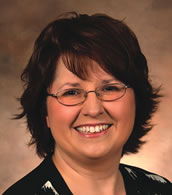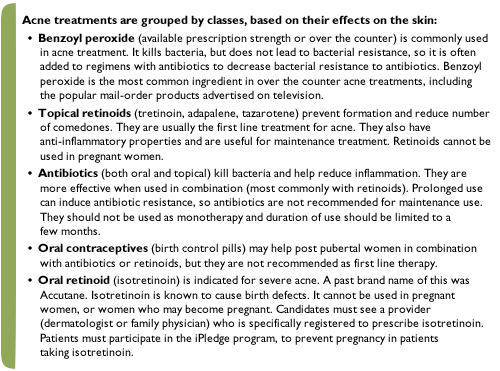|
Acne: More common than you thinkAmy Ludwikowski, MD Acne is the most common skin disorder in the United States, affecting 40 to 50 million people of all ages and races. It is most common in ages 12 to 25, affecting up to 80 to 95% of teens. In the teen years acne is more common and severe in males than females. Most acne clears by age 25, but it can persist into the later adult years, more commonly in women. Acne is a chronic skin condition which includes noninflammatory comedones (also referred to as blackheads and whiteheads), and inflammatory lesions (including pustules and nodules). It is commonly found on areas with more sebum (oil) glands such as the face, neck, back, chest and upper arms.
Acne can occur on its own or as a symptom of another disease, such as polycystic ovarian disease or Cushing’s disease. However, most acne is not a result of other diseases. Factors that predict acne severity include earlier onset of acne and family history. Other contributing factors include menstruation, picking at lesions, emotional stress, skin occlusion by greasy products (cosmetics or hair products), sweating, mechanical forces (helmet, chin straps), and medications (most commonly anabolic steroids and anti-seizure medications). Increased body mass index has been associated with increased acne among females. Acne is not associated with poor hygiene. Diet has been investigated for a cause of acne. Chocolate and sugar consumption has NOT been linked to increased acne. There have been a few studies that have shown an association between milk intake (especially in girls) and increased acne. The studies had some limitations, and relied on patients’ past observation, so it is difficult to make any strong conclusions. A low glycemic load diet may reduce inflammatory lesions and improve acne. There are numerous treatments for acne, but there are a few basic principles. Acne is not associated with poor hygiene, and aggressive scrubbing/cleansing may cause more skin damage, allowing bacterial infection and greater inflammation. Improvement of acne usually takes 4 to 8 weeks after starting treatment. Acne may worsen in early treatment before it gets better.
Most acne can be treated by your primary care provider (family physician, pediatrician, internist), and many are registered to prescribe isotretinoin as well. Referral to dermatology should be considered when treatment goals are not met despite numerous medications, or when there is significant scarring.
Dr. Ludwikowski – OakLeaf Clinics, SC – Eau Claire Women’s Care |



